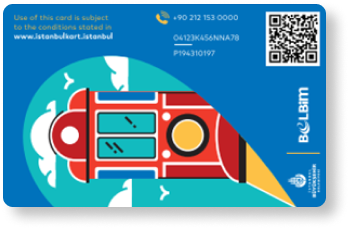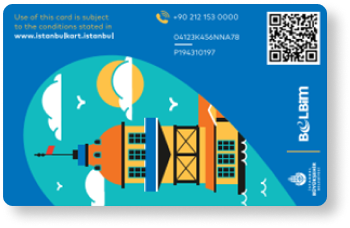
A Cappadocian Mystery: Kaymakli Underground City
Cappadocia is beautiful. Hot air balloons going up on sunrise, people moving around amazing natural landscapes, caved wonders all around… On the surface, it is the most beautiful touristic area in the world. But did you know that underneath them all, there are also amazing things to see and discover? Wait for it, there are around 200 underground cities in the Cappadocian region. Many of them are still waiting to be rediscovered but as of 2023, you can visit three of them; Ozkonak, Derinkuyu, and Kaymakli underground cities.
In this article, we are going to look deeply at Kaymakli Underground City. For detailed reviews of Ozkonak Underground City and Derinkuyu Underground City, visit our previous blog posts, you may discover more about Cappadocia in our carefully written blog posts. But before we dig into Kaymakli, let us recommend you our beloved tourist card to you: Cappadocia Travel Pass®. This Pass includes 35+ attractions all around Cappadocia such as a discounted hot air balloon ride, free entrance to underground cities, and more. You can join a free wine tasting and a free whirling dervishes show with the same digital pass. It is completely digital, easy to use, and definitely worth the price! Now, let’s go back to Kaymakli!
What is inside Kaymakli Underground City?
One of the biggest and best-preserved underground cities in the area is Kaymakli Underground City, which is thought to have been created by the earliest Christians as a refuge to hide from persecution. We discuss the history in the previous section of this article.
An intricate system of tunnels, chambers, and galleries has been excavated deep into the volcanic tuff rock at Kaymakli Underground City. There are eight floors in the city, although only four are accessible to the general public today. The underground city can hold up to 3,000 people and is over 85 meters deep. You will come across low, winding passages, steep stairs, and rooms that have seen a variety of uses as you explore Kaymakli.
Water wells, storage spaces, and ventilation shafts are also visible. Some of the spaces, including a church, stables, and kitchens, were used as social gathering places. Burial chambers, which were used to bury the dead inside the city walls, are another thing you will see.
The massive circular stone entrance that was used to protect the city from invaders is one of the Kaymakli Underground City’s significant symbols. The door could only be opened from the inside and is estimated to weigh over a thousand pounds. The air conditioning system, which is still functional and is said to have been utilized to control the city's temperature and humidity, is another noteworthy aspect.
A Hidden Living Space: Kaymakli Underground City
As we mentioned earlier, the underground city has eight stories, although only four of them are accessible to the general public right now. On these four floors, the rooms are arranged around ventilation shafts. Let’s have a look at the floors and what’s on them.
The first floor of the underground city is the stable. The tiny size of this space raises the possibility that there are other stables in open parts. A millstone door in the corridor to the left of the stable opens into the sanctuary. Rooms with living spaces have been hollowed out to the right of the corridor.
The second floor is for worship and there is a church carved there. The church features two apses and one nave. There is an altar in front of the apses, and there are platforms for people to sit. On this floor, there are also some dwelling spaces. There are many rock-caved churches in Cappadocia because of the fear of outsiders but seeing a house of worship underground, will make you feel how strong their belief was.
The third floor of the underground city contains the most significant locations. The andesite block with relief texture that can be seen on this floor is quite interesting, in addition to the numerous storage spaces, vineyards, and kitchens. Modern studies have demonstrated that this stone served as a copper melting kettle. The stone was not imported; rather, it was a piece of the andesite stratum that had been exposed during the hollowing process. On the surface of the stone, 57 holes were etched so that it could be used as a melting pot. Hard rock would be used to smash the copper ore, which was about 10 cm long, into one of those holes. The prehistoric periods are when this method first became popular. How humanity carries its culture is amazing.
The abundance of storage spaces and locations for earthenware jars in the vineyards on the fourth floor suggests that the inhabitants of this underground city were in a secure financial position. The fourth story offers a view of the ventilation shaft as well. It descends all floors vertically, just like an apartment building elevator. The ventilation shaft is a total of roughly 85 meters deep.
Kaymakli is undoubtedly one of the biggest underground settlements in the area, even if only 4 floors have been exposed and the entire city has not yet been fully revealed. It is acknowledged as being the largest explored underground city in Cappadocia. The fact that there were so many storage rooms in such a short space suggests that there were many people living there. As we mentioned above, according to archaeologists, this number could have reached up to 3500 people.
History of Kaymakli Underground City in Cappadocia
Now, let’s have a quick look at the long history of this amazing place, Kaymakli Underground City. Around the eighth and seventh centuries BC, it was constructed by the local early Christian communities after Phrygians. The city is thought to have served as a refuge against invasions, calamities, and assaults. The city was also used to safeguard cattle and stockpile food and water supplies. Let’s dig deeper.
The Phrygians, a civilization that flourished in central Anatolia from 1200-700 BC, are credited with building the Kaymakli Underground City. The people, who had become Christians, had expanded their caverns by adding chapels and Greek inscriptions when the Phrygian language disappeared during the Roman era and was replaced with Greek. Cappadocian Greek is another name for this society today. The Christians who lived in the region throughout the Byzantine era later added to and enlarged the city.
When the city was utilized to defend against Muslim Arab raids during the four centuries of Arab-Byzantine wars, during the Eastern Roman era, known also as the Byzantine period, the city was substantially deepened and expanded. Via kilometers of tunnels, the city was connected to the Derinkuyu Underground City. During the fifth and tenth century AD, the Middle Byzantine Period produced some artifacts that were found in these underground villages. The Christians who lived there continued to use these cities as a defense against Timur's Mongolian incursions in the fourteenth century.
The underground cities continued to be used as refuges to hide from the Turkish Muslim rulers after the region was conquered by the Seljuk Turks of Persia. As late as the 20th century, the inhabitants, now known as Rum by their Ottoman rulers, were still using the underground cities to flee waves of Ottoman persecution.
In 1909, a large portion of the Christian inhabitants sought sanctuary in these underground rooms as news of the recent atrocities at Adana spread, and for a few nights, they did not venture to sleep above ground. So, the cities were still in operation at that time but the tunnels were completely abandoned in 1923 after the Greek residents of the area were driven out as part of the population exchange between Greece and Turkey.
Until it was rediscovered in 1964, Kaymakli Underground City was an abandoned place, because all the inhabitants lived there for centuries were now gone. Today, Kaymakli is open for visits if you don’t have claustrophobia! It is an amazing place to witness humanity's desire to keep their beliefs even if it does mean living underground.
Tips for Visiting the Kaymakli Underground City
During your Cappadocia journey, the intriguing and distinctive Kaymakli Underground City is a must-see sight. Here are some tips to maximize your experience while visiting, so you won’t get there unprepared.
Follow rules and the blue arrows all the time: The blue arrows will guide you around the visitable areas so you won’t get lost. Please keep in mind that, yes, you can get lost.
Wear supportive shoes, if possible waterproof sneakers: The tunnels beneath Kaymakli are mostly tiny and uneven, so it's crucial to wear comfortable and supportive footwear that will provide sufficient traction.
Bring a light jacket even in summer: You will be more comfortable dressing in layers because the underground city can be quite cold and humid. Even on a crazy hot summer day, you can still get chilly underground. No need to mention winters!
Bring a flashlight: You can use it to explore the many rooms and navigate the underground passages, which can be gloomy and poorly lighted in some places. The best part, you can feel like an investigator!
Be careful all the time: It's crucial to always be aware of your surroundings because the subterranean tunnels can be narrow and some parts might be challenging to maneuver. Keep to the prescribed paths and pay attention to any markers or warning signs that point out potential dangers. So, be careful about your steps and ceilings.
Be respectful: Kaymakli Underground City is a significant historical and cultural place, so it's crucial to recognize its importance. Like in a museum, be careful not to harm any artifacts, don’t write your name on the walls, and don’t throw your trash. Oh, and smoking is not allowed of course.
Avoid visiting if you suffer from claustrophobia or a fear of small places: When visiting Kaymakli Underground City, some visitors may feel uneasy or anxious due to the underground tunnels' potential for being confined and cramped, as well as their potential for having low ceilings in some locations. So it is for the best, not to go in at all. But if you do visit Kaymakli, take a break in one of the authorized resting spaces located throughout the underground metropolis if you feel overwhelmed at any point, or go outdoors and breathe some fresh air.
Keep an eye on your children all the time: No matter how alluring it may seem, avoid entering any shafts or corridors that are not illuminated by lighting because these are still being excavated and are not accessible to the general public. If you have children with you, be sure to keep an eye on them, because kids can be curious about the places where you can’t fit but they definitely do!
Arrive early: Don’t forget that Kaymakli is a popular spot even though it's not on the regular tourist path. Arriving early will help you avoid the long lines and crowds.
Buy Cappadocian Travel Pass® so you don’t have to wait in ticket lines: Cappadocia Travel Pass® is great for a lot of reasons but the best thing about it is that you can save plenty of time instead of waiting for long ticket queues. Kaymakli Underground City is included with the Pass as well as other 35+ attractions.
These tips can help you explore Kaymakli Underground City safely and have fun while learning about the area's fascinating history and culture. So, why wait, see you in Cappadocia this year!
FAQ
Which underground city in Cappadocia is better?
Cappadocia is thought to have about 200 underground cities but today only three of them are open to the public. These three underground cities are Derinkuyu, Kaymakli, and Ozkonak but it is not fair to compare them, they all have different features. But read our blog posts and decide for yourselves.
How deep is Kaymakli Underground City?
Some sources mention that Kaymakli Underground City is 60 meters but others say 80 meters. Since we didn’t measure ourselves, we can depend on the official numbers so it is around 80 meters deep.
Is the underground city in Cappadocia worth visiting?
Underground cities in Cappadocia are amazing and definitely worth visiting if you can. You can witness humanity’s strength and persistence during your visit.
How much is entry to Kaymakli Underground City?
As of 2023, entry to Kaymakli Underground City in Cappadocia Turkey is 100 TL
How to get from Göreme to Kaymakli?
Taxis or private drivers are the quickest ways to travel from Goreme to Kaymakli Underground City. An alternative is to take a bus to Nevsehir, where you can change to a bus going to Kaymakli.
Is Kaymakli underground city claustrophobic?
Underground cities can be claustrophobic but there are areas you can rest inside if you feel overwhelmed. But if you suffer from claustrophobia, we recommend you not to get inside.
How many floors in Kaymakli?
Kaymakli Underground City has 8 floors but only 4 of them are open to the public by 2023.
Who lived in Kaymakli?
Early Christians hiding from Roman Empire were the first inhabitants of Kaymakli Underground City. Later on, Christians continue to hide there up until 1909 when they need a secure area.




 Travel around Istanbul freely
with Public Transportation Card
Travel around Istanbul freely
with Public Transportation Card
Buy your unlimited Istanbul Public Transportation Card now. We deliver it your hotel before you arrive.





Latest Posts

Why Should You Visit Cappadocia? Updated for 2023
Have you ever wondered where all those lovely photographs of a valley seen from a hot air balloon originate from? Cappadocia, tucked right in the heart of Turkey's Anatolia region, is one of the country's tourism centers, despite its tiny size. And w...

Cappadocia: Hot Air Balloon Flight Guide 2023
Have you ever wondered what it feels like to fly? To float among the birds in the sky and enjoy a bird’s eye view of the gorgeous surroundings around you? Hot air balloons in Cappadocia, Turkey provide just that and more – all the while delivering an...

Underground Cities of Cappadocia
The ancient underground cities of Cappadocia may strike the interest of even the most claustrophobic person! Every year tens of thousands of tourists around the world visit Cappadocia to discover these mysterious caves and learn about their history. ...

How far is Cappadocia from Istanbul?
The distance between Cappadocia and Istanbul is around 730 km (454 miles). This may seem like a lot but think about all the adventures you will experience once you arrive! Furthermore, there are many ways to get there and you will surely find one tha...

Top Things to Do in Cappadocia
Wondering about things to do in Cappadocia? Trying to arrange your trip but there are many question marks. Cappadocia Travel Pass® provides over 25 attractions, with just one pass – so book yours NOW! Here is a list of the main must-do activities but...

The Top 20 Amazing Cave Hotels in Cappadocia
Looking for a unique, one-of-a-kind place to stay in Cappadocia? Why not try a cave hotel? There are plenty of incredible cave hotels in Cappadocia that maintain the region’s history while providing a uniquely modern experience.&n...

Everything About Ihlara Valley
Ihlara Valley, which can be mistakenly written as Ilhara Valley, is a canyon with a depth of around 120 meters and was created by the Melendiz River thousands of years ago. To enjoy this amazing natural beauty, Cappadocia Travel Pass offers yo...

The Top 18 Reasons to Visit Cappadocia
There are many reasons to visit Cappadocia, from its amazing natural beauty to the warm and welcoming natives. Here, you can find 18 reasons to visit Cappadocia! Planning your Cappadocia trip can be exhausting since you may see many different ...

Cappadocia From İstanbul
Istanbul is Turkey’s most crowded city and it has many cultural values because of the historical background of the region. Tourists mostly prefer to start their Turkey journey from İstanbul because of these facts. The distance between Istanbul and C...

Whirling Dervishes Sema Ceremony in Cappadocia
The term "sema" has Arabic roots. It can mean two things. The sky is one, and listening is another. It eventually came to be known as one of the dhikr rituals the Sufis, who practiced Sufism, did by rotating themselves around to the accompaniment of ...

4.8 out of 5 stars
Cappadocia Travel Pass has an average rating of 4.8 /5 from 1075 reviews
Read all traveler reviews →